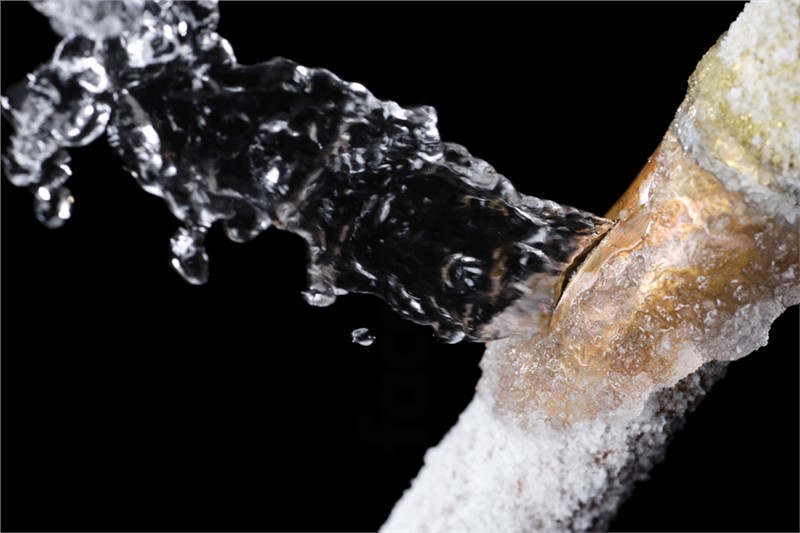Steps to Take When Your AC Pipe is Frozen: Detailed Handbook
Steps to Take When Your AC Pipe is Frozen: Detailed Handbook
Blog Article
Every person may have their own unique way of thinking with regards to Why Is Ice On My Outside Air Conditione.

Introduction
Uncovering that your air conditioning pipeline is iced up can be worrying, specifically during hot summertime when you rely on your ac unit one of the most. Recognizing what to do in such a circumstance is vital to avoid further damages to your air conditioning system and guarantee your comfort inside your home.
Recognizing the Causes
Numerous aspects can add to the cold of an air conditioning pipe. Comprehending these reasons can aid you resolve the problem effectively.
Lack of Airflow
One typical cause of a frozen air conditioning pipe is inadequate airflow. When the airflow over the evaporator coil is limited, it can trigger the coil to go down below freezing temperature level, bring about ice development on the pipe.
Low Refrigerant Levels
Insufficient cooling agent levels in your air conditioning system can additionally lead to a frozen pipe. Low cooling agent degrees can trigger the pressure in the system to drop, leading to the cold of dampness on the evaporator coil.
Cold Weather Conditions
In cooler climates, freezing temperature levels outside can contribute to the freezing of AC pipes. If your air conditioner system is not correctly insulated or if there are leaks in the ductwork, cool air can infiltrate the system, creating the pipeline to freeze.
Dirty Air Filters
Unclean or clogged air filters can limit air movement in your air conditioning system, causing different concerns, consisting of an icy pipeline. It's essential to change or clean your air filters on a regular basis to make sure correct air movement and avoid ice accumulation.
Indications of a Frozen AC Pipe
Identifying the signs of an icy a/c pipeline is vital for prompt activity.
Lowered Airflow
If you notice a substantial reduction in airflow from your vents, it can suggest a frozen pipeline.
Ice Buildup on the Pipe
Visible ice accumulation on the cooling agent line or the evaporator coil is a clear indicator of an icy air conditioning pipeline.
Unusual Sounds from the Unit
Uncommon sounds, such as hissing or gurgling, coming from your a/c unit can signal that there's ice existing on the pipeline.
Immediate Actions to Take
When faced with an icy air conditioning pipeline, it's essential to act promptly to prevent more damage to your air conditioning system.
Shutting off the AC
The first step is to turn off your air conditioner to stop the system from running and worsening the concern.
Looking for Blockages
Check the location around the indoor system for any blockages that may be obstructing airflow, such as furnishings or drapes.
Thawing the Pipe
You can use gentle methods like placing towels taken in cozy water around the icy pipeline to aid thaw it slowly.
Safety nets
Taking preventive measures can assist stay clear of future events of a frozen air conditioning pipeline.
When DIY Methods Fail
If your attempts to thaw the pipeline or address other issues are unsuccessful, it's time to employ an expert.
Significance of Hiring a Professional HVAC Technician
A certified HVAC specialist has the knowledge and devices essential to detect and fix issues with your air conditioner system securely and effectively.
Regular Maintenance Checks
Schedule regular maintenance talk to an expert HVAC specialist to ensure that your air conditioner system is running effectively.
Altering Air Filters
Consistently change or cleanse your air filters to avoid airflow limitations and preserve optimum performance.
Protecting Exposed Pipes
If your AC pipes are exposed to chilly temperature levels, take into consideration insulating them to avoid freezing during cold weather.
Looking For Professional Help
If DIY approaches fall short to deal with the problem or if you're unsure regarding how to proceed, it's best to seek support from a certified HVAC professional.
Verdict
Dealing with an icy a/c pipeline can be a frustrating experience, however knowing how to respond can assist lessen damage and restore convenience to your home. By comprehending the causes, identifying the indicators, and taking punctual activity, you can properly address the concern and avoid future events.
G UP? HOW TO FIX IT?
It happens all over America. And the rest of the world probably. It’s the hottest day ever and for some darn reason your AC isn’t cooling the house. You fiddle with the thermostat to try and fix the problem. Nada. All you can do now is go outside and check the AC unit. You make your way there and find your air conditioner unit is frozen! But how?
In this post we’ll cover how you can tell that your air conditioner has frozen (other than the obvious reasons), what could have caused the freeze, and some of the things you can do about your AC freezing up. And if you have a frozen heat pump condenser, read our blog about it to learn what to do! But remember, it is always best to avoid your AC freezing up with an AC tune up. And if you are moving into a home, it's critical to get HVAC inspection so that you are aware of an AC problems before you move in.
Keep reading and you may be able to fix the frozen AC yourself. If you can’t, call an HVAC specialist. If you live in Maryland, call SuperTech HVAC for AC repair. We’ll take care of it.
How Does An Air Conditioning Unit Work?
How you probably imagine an AC works is wrong. Contrary to popular belief, an AC system does not inject cool air into a building. Instead, it removes the heat from inside and transfers it outside. Cool huh? (Pun intended).There are 4 major components among the 3 stations of an air conditioning system: the evaporator coil, the compressor, the condenser, and the refrigerant – a special chemical that links everything together through a closed loop system.
Station 1:
Warm indoor air is sucked into the return vent, through a filter, and blows over the evaporator coil. The heat is absorbed into the cold refrigerant, turning it from liquid to gas. The air, which is now cool, is blown back into the home to areas that your thermostat, i.e. you, has decided.
Station 2:
The refrigerant makes its way outside the house to the compressor, which squeezes the warm refrigerant, raising its gaseous temperature even more.
Station 3:
When the super hot vapor refrigerant reaches the condenser, the last step, the heat is expelled and absorbed into the outdoor air. The refrigerant instantly cools, which changes it from gas back to liquid form. The cold liquid refrigerant is now ready to return to station 1 and repeat the process.
Is Your AC Freezing Up? Here Are The Signs:
As you may have guessed, your air conditioner unit freezing up on a hot day is not normal.
If this happens, there's no need to panic. Often the issue can be solved with a little troubleshooting. If the AC unit is left frozen for too long however, you may find yourself with a bigger problem.
First things first, how do you know your AC is frozen?
Well, the obvious sign is the ice on your refrigerant line-set pipe. Simply check between your outdoor AC unit and your home's exterior wall to see whether your AC line frozen.
You might also have a frozen evaporator coil. This one's not as easy to check. You'll need to open a panel on the indoor unit to inspect. Don't do this unless you're handy. If you aren't, call an HVAC pro like SuperTech HVAC or you may damage something in the process.

We hope you enjoyed our article on How can I fix an air conditioner’s frozen pipe?. Thanks a ton for taking time to read through our piece of content. Sharing is caring. Helping people is fun. Thanks a lot for your time. Don't hesitate to check our blog back soon.
Click Here Report this page